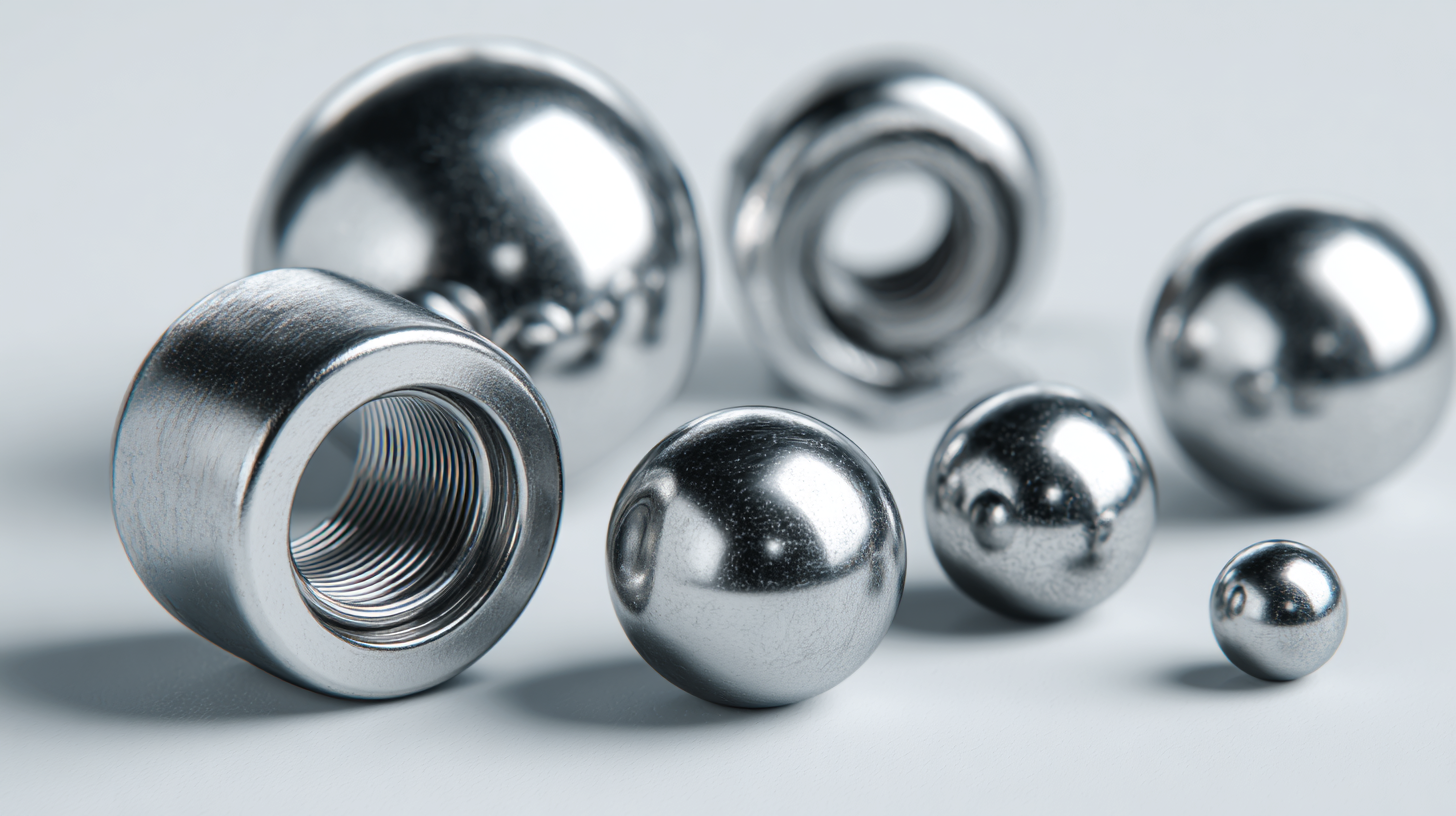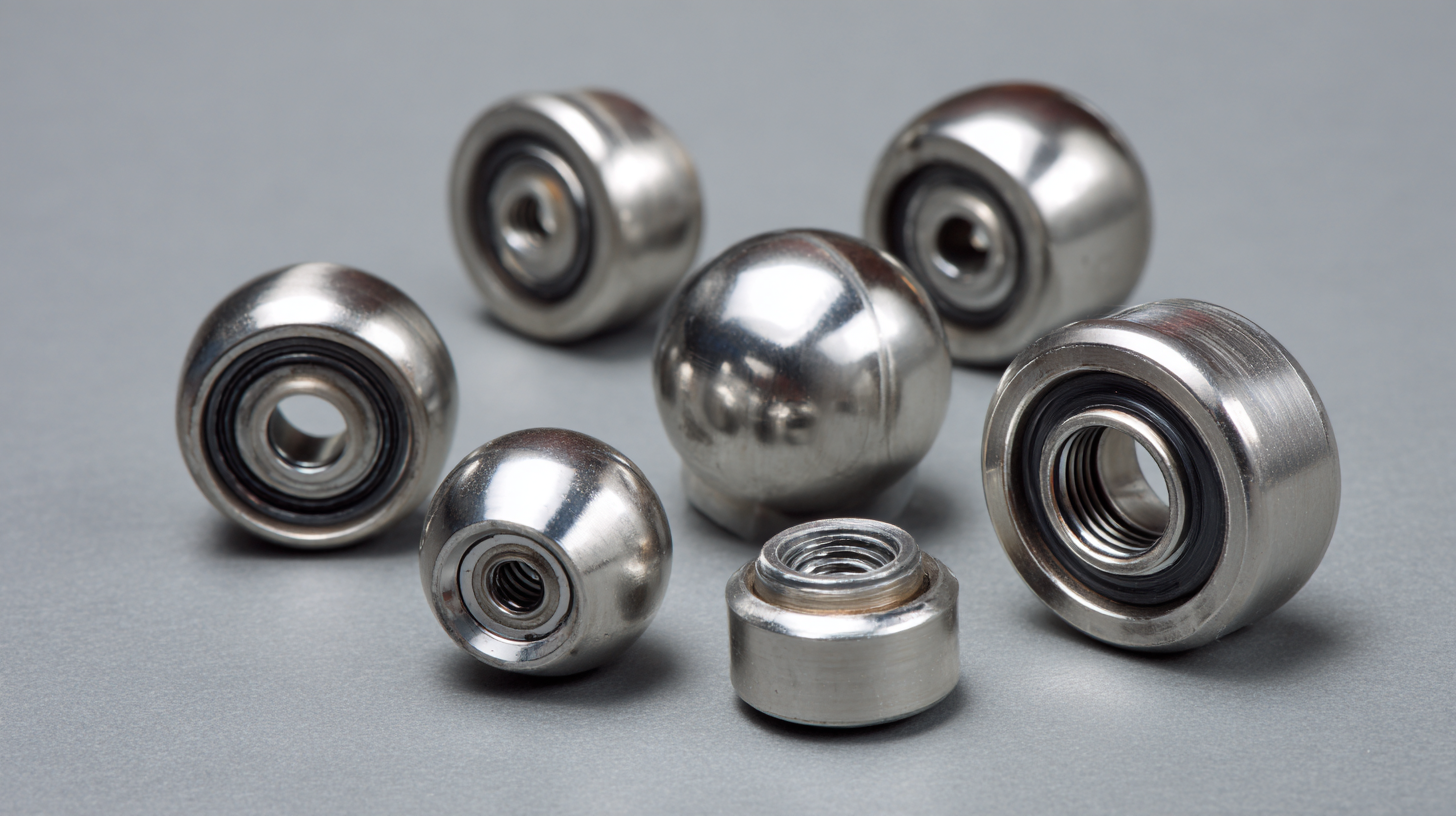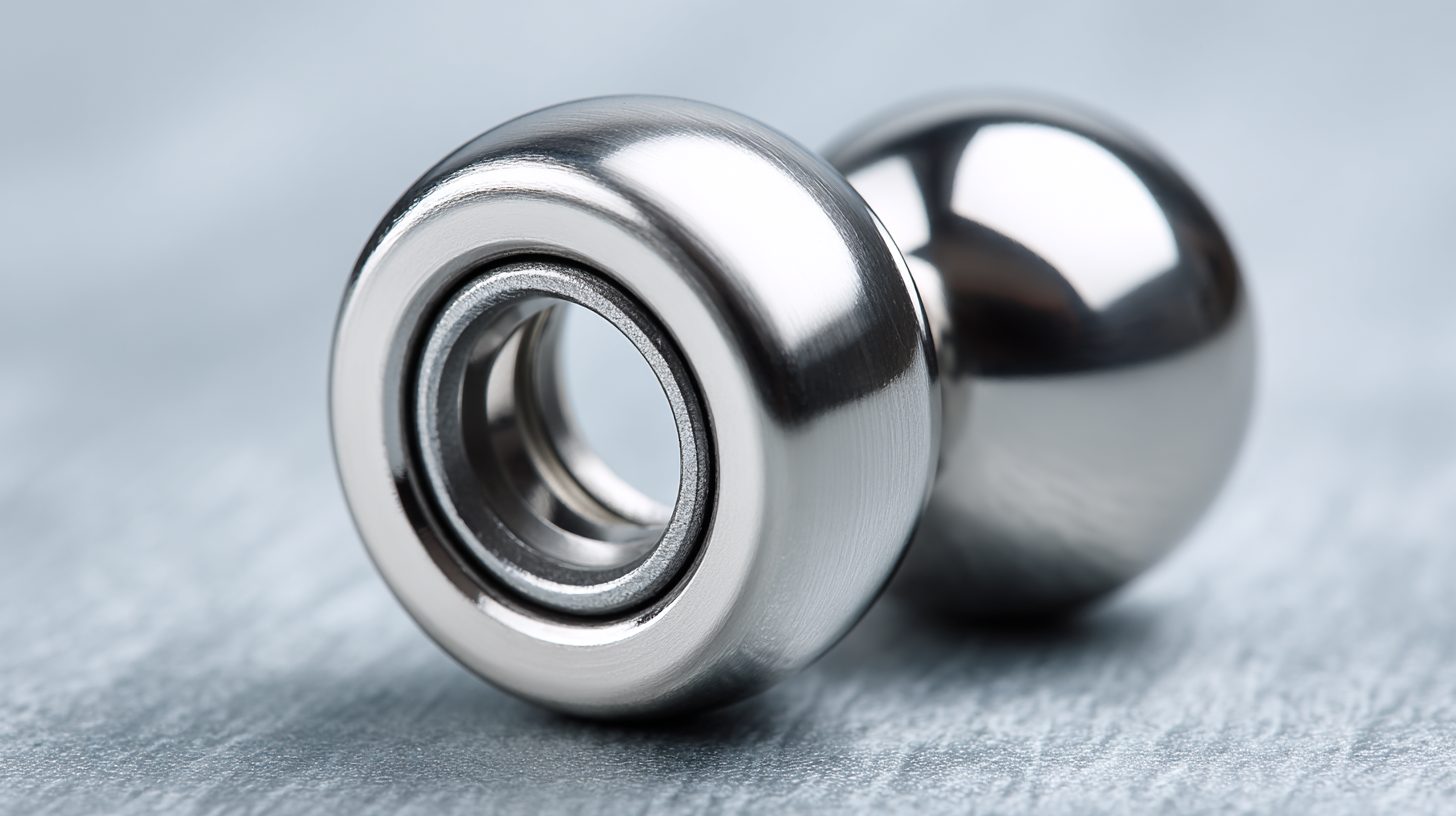Selecting the right stainless steel ball bearings for your application is crucial for ensuring optimal performance and longevity of machinery. According to recent industry reports, the global market for ball bearings is projected to reach approximately $40 billion by 2026, driven by the increasing demand for reliable and efficient components in various sectors such as automotive, aerospace, and manufacturing. Stainless steel ball bearings are favored for their resistance to corrosion and high strength, making them ideal for applications exposed to harsh environments. As industries continue to innovate and evolve, understanding the specific requirements and applications of stainless steel ball bearings becomes essential in maintaining operational efficiency and reducing maintenance costs. This guide aims to provide you with the knowledge necessary to make informed decisions in selecting the most suitable stainless steel ball bearings tailored to your unique operational needs.

When selecting stainless steel ball bearings, it's essential to understand the various types available, as each type serves distinct applications and offers unique benefits. The most common types include deep groove ball bearings, angular contact ball bearings, and self-aligning ball bearings. Deep groove ball bearings are versatile and suitable for high-speed applications, providing low friction and the ability to accommodate both axial and radial loads. These bearings are widely used in electric motors, household appliances, and automotive components.
Angular contact ball bearings, on the other hand, are designed to handle higher axial loads and are often used in applications requiring precise positioning. These bearings are suitable for high-speed environments, such as in machine tool spindles and gearboxes. Finally, self-aligning ball bearings feature a unique design that allows for misalignment, making them ideal for applications where shaft deflection occurs. Understanding the differences between these types can significantly impact the performance and longevity of machinery, ensuring you choose the right bearing for your specific needs.
When selecting stainless steel ball bearings for various applications, several key factors come into play. One of the foremost considerations is the type of stainless steel used. Common grades like 440C and 316 offer differing levels of corrosion resistance and hardness, impacting the bearing's performance in specific environments. According to a study by the American Society of Mechanical Engineers (ASME), about 60% of bearing failures can be attributed to improper material selection, underscoring the importance of this decision.
Another critical factor is load capacity and design. The dynamic load rating of stainless steel ball bearings varies by size, design, and the number of balls. For instance, a report from the International Organization for Standardization (ISO) emphasizes that using bearings with a higher load capacity than required can significantly enhance durability and lifespan.
Tips: Always consult load capacity charts and consider both radial and axial loads in your application. Additionally, ensure proper lubrication; using the right lubricant can reduce wear and extend the life of your bearings by up to 50%. Lastly, factor in environmental conditions, as exposure to moisture or chemicals can greatly affect bearing performance.
When selecting stainless steel ball bearings for specific applications, one of the primary considerations is assessing load capacity. According to the American Bearing Manufacturers Association (ABMA), the dynamic load rating (C) is a crucial metric that indicates how much load a bearing can handle while maintaining optimal performance. Typically, stainless steel ball bearings are rated for loads ranging from 1,000 to 5,000 newtons, depending on their size and design. This differentiation helps engineers select the right bearing based on whether the application involves heavy machinery or lighter systems.

In addition to load capacity, the performance requirements of the bearings plays a critical role in the selection process. For instance, a study by the International Organization for Standardization (ISO) highlights that bearings subjected to high speeds may need to have a lower coefficient of friction to prevent overheating and premature failure. This necessitates examining the specific grade of stainless steel used, as materials like AISI 440C can withstand harsher environments compared to standard grades. Ultimately, a careful evaluation of both load capacity and performance parameters is essential to ensure reliability and longevity in your applications.
When selecting stainless steel ball bearings for specific applications, evaluating environmental conditions is crucial in ensuring optimal performance and longevity. Different environments can impose various challenges on bearings, including exposure to moisture, chemicals, and extreme temperatures. For instance, in marine applications where bearings may be constantly exposed to saltwater, choosing bearings with high corrosion resistance is essential. Stainless steel with added alloys, such as 316 stainless steel, can provide enhanced protection against rust and pitting, prolonging the lifespan of the bearing.
Moreover, operating temperatures can significantly affect the choice of materials and lubricants used in ball bearings. Bearings exposed to high heat may require special high-temperature lubricants to prevent degradation, while cold environments might call for low-friction materials to reduce the risk of freezing or brittleness. Additionally, certain chemical environments necessitate the selection of bearings that can withstand specific fluids, which may involve using seals or shields to provide additional protection. By carefully evaluating these environmental conditions, you can select the most suitable stainless steel ball bearings that will meet the demands of your application effectively.

Stainless steel ball bearings are versatile components widely used in various applications due to their durability and resistance to corrosion. In industries such as automotive, aerospace, and manufacturing, these bearings withstand heavy loads and high speeds while providing smooth rotation. For instance, in automotive assemblies, stainless steel ball bearings are essential for wheel hubs and transmissions, where reliability and performance are critical. Their ability to resist rust and wear extends the lifespan of these systems, ultimately improving vehicle safety and efficiency.
In the food processing and pharmaceutical sectors, stainless steel ball bearings are crucial because they meet strict hygiene standards. These environments often require components that can endure frequent cleaning and exposure to harsh conditions. Therefore, using stainless steel bearings helps prevent contamination, ensuring that products maintain their integrity. Additionally, in applications like robotics and conveyors, these bearings facilitate precise movement and control, essential for automation processes. Selecting the right type of stainless steel ball bearing tailored to these specific needs enhances operational efficiency and protects against premature failure.
To learn more about any of the products and services provided by Abbott Ball Company, Inc., simply complete the form below.